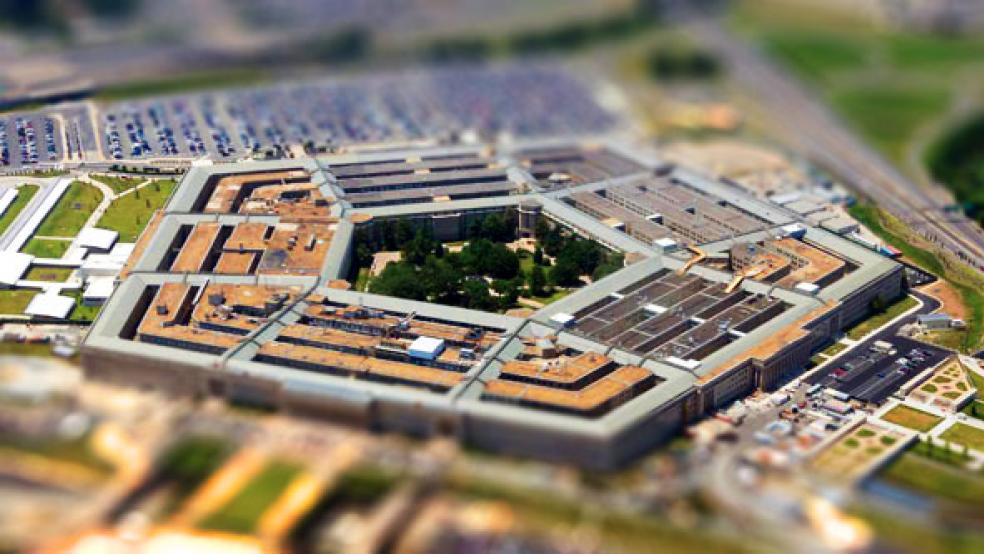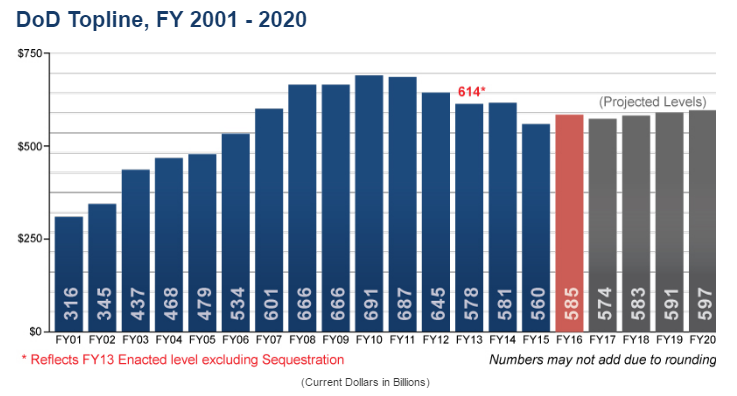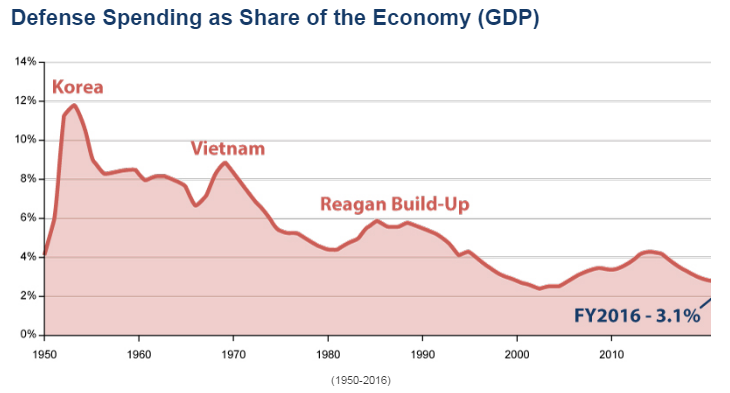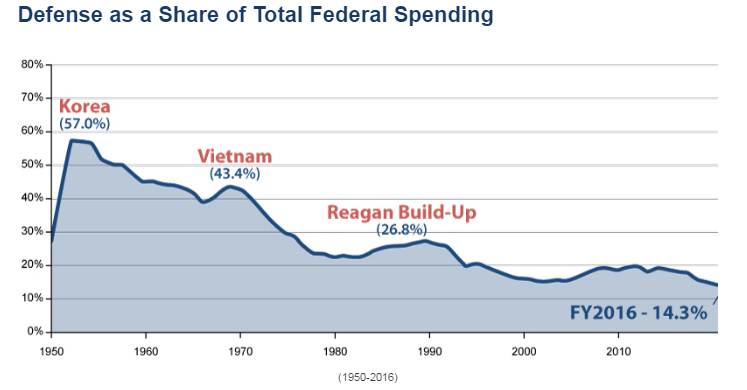Monday unveiled a proposal to boost military spending by $54 billion and cut an equal amount from non-defense spending, reportedly including reductions to the budgets of agencies such as the State Department and the EPA. President Trump said his proposed federal budget for next year represents an “historic increase in defense spending to rebuild the depleted military of the United States of America at a time we most need it.”
Related: Conflicting Signals on How Trump Will Pay for His $54 Billion Military Buildup
If $54 billion sounds like a lot, well, it is. While it’s just about 1.4 percent of the $3.9 trillion in federal spending for 2016, it represents a 9.2 percent increase above the $584 billion spent on defense last year. The request comes less than three months after The Washington Post reported that the Pentagon buried a proposal to cut $125 billion in wasteful administrative spending over five years. And as Slate’s Fred Kaplan explains:
The wars we’re fighting now don’t require huge, expensive weapons systems. President Obama’s last budget, which the Pentagon is spending now, allotted $7.5 billion for the war against ISIS, $6.7 billion for cyber defenses, and $1.2 billion for counterterrorist drone operations. Double all that, and you’ve spent an extra $15.4 billion, less than one-third of Trump’s increase.
As you can see in the Defense Department’s topline budget chart below, the $54 billion increase would boost military spending back to where it was during the early years of the Obama presidency, before the caps imposed by sequestration. (Budget expert Stan Collender notes that those spending caps imposed under the 2011 Budget Control Act will be a legal obstacle to Trump’s budget plans.)
Related: Trump's Military Buildup Makes Even His Generals Nervous
On the other hand, our defense budget is already far bigger than it was a decade ago, and nearly double what it was in 2001 — and that largely holds true even if you don’t count the extra money allotted for “Overseas Contingency Operations,” the funds allocated separately that pay for our wars.
Current dollars in billions. Source: Department of Defense
As a share of GDP and of total federal spending, though, the defense budget smaller than it has been in recent years, as you can see in these two charts:
Source: Department of Defense
Source: Department of Defense
The problem is that, as our population ages, mandatory spending on entitlements including Social Security, Medicare, Medicaid and other programs like unemployment compensation, federal and military retirement benefits now account for more than 60 percent of federal spending. Those are the biggest drivers of federal spending. Adding in interest on the federal debt takes leaves discretionary spending — on defense and everything else — at about 31 percent of federal spending. Since Trump has promised not to cut Social Security or Medicare, and will face pressure not to raise the deficit, boosting defense spending by $54 billion thus requires slashing spending by 12 percent in areas where there’s relatively little left to cut — areas like infrastructure, scientific and medical research, environmental protection, foreign aid and others.
Related: A Military Buildup and Big Tax Cuts — Is the Debt Set to Soar Under Trump?
Here’s one other way to look at the $54 billion boost to the defense budget, provided by Statista: U.S. defense spending already dwarfs that of the rest of the world, and the annual increase would be roughly equal to the entire military expenditures of France ($51 billion in 2015), the U.K. ($55 billion in 2015) or Russia ($66 billion in 2015).
 You will find more statistics at Statista
You will find more statistics at Statista








